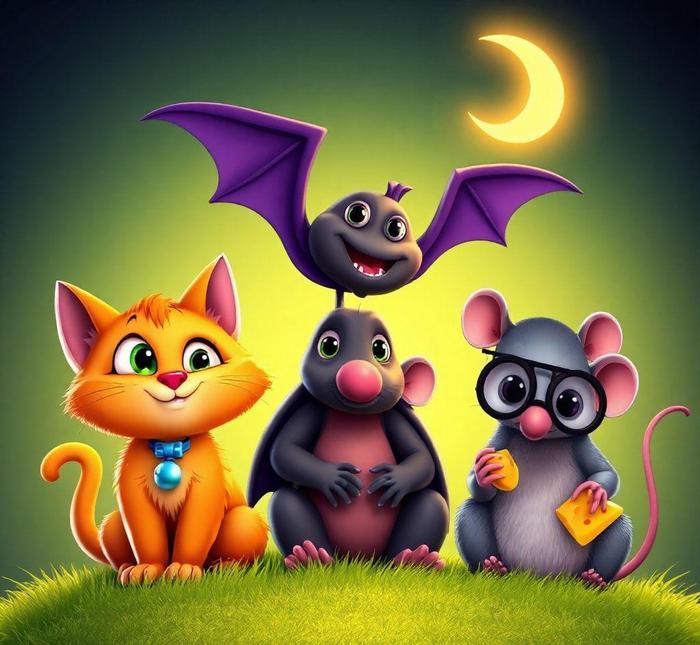- You are here:
- Home »
- words
- » 3 Letter Words That Start With T [LIST]

3 Letter Words That Start With T [LIST]
Three-letter words that start with the letter ‘T’ are often overlooked, yet they are essential building blocks of the English language. Whether used in everyday conversations or in more complex writing, these small words hold great significance in communication. From simple verbs to common nouns and adjectives, each three-letter word starting with ‘T’ serves a distinct purpose, allowing speakers and writers to convey meaning effectively. Exploring this list not only enhances vocabulary but also provides a fun and practical way to engage with the language.
Learning and using three-letter words can improve both reading and writing skills, especially for young learners or those studying English as a second language. These words are easy to remember and can be combined to create larger, more intricate phrases or sentences. This article will guide you through a comprehensive list of three-letter words that begin with ‘T’, offering examples of how they are used in context. Whether you’re a language enthusiast, a student, or someone looking to expand your vocabulary, this list will provide valuable insight into a key segment of the English language.
3 Letter Words That Start With T
1. tab
A tab refers to a small, often labeled portion used to categorize or mark items, or a running bill in a bar or restaurant.
Examples
- She placed the receipts on the tab to organize them.
- He opened the tab for his favorite website.
- The bartender handed over the tab after a long night of drinks.
2. tag
A tag is a label or marker, often used for identification or classification, commonly attached to objects or people.
Examples
- He put a tag on his luggage for easy identification.
- Each gift was labeled with a tag that mentioned the recipient’s name.
- She attached a price tag to the dress before setting it on display.
3. tan
Tan can refer to a light brown or yellowish-brown color, often used to describe skin tone or fabric.
Examples
- Her skin had a golden tan after the summer vacation.
- He wore a tan suit for the formal event.
- The leather was well-worn, having developed a rich tan over time.
4. tap
A tap can refer to a gentle touch, a mechanism used for dispensing liquids, or a musical instrument for rhythm.
Examples
- He turned the tap to fill his glass with water.
- They tapped their feet to the beat of the music.
- A tap on the shoulder alerted him to someone behind him.
5. tar
Tar is a dark, thick liquid derived from coal or petroleum, used in construction or to seal surfaces.
Examples
- The road was covered in tar to smooth the surface.
- He used tar to seal the cracks in the roof.
- The boat’s hull was stained with black tar after a long voyage.
6. tax
A tax is a mandatory financial charge imposed by a government on its citizens to fund public services.
Examples
- The government increased the tax on luxury goods.
- She paid her income tax online for the first time.
- The business had to calculate the tax rates for each product.
7. tea
Tea is a beverage made by steeping tea leaves in hot water, or the leaves themselves used for this purpose.
Examples
- She drank a cup of herbal tea to relax after a busy day.
- The tea ceremony was a traditional event in their culture.
- He prefers his tea with lemon and no sugar.
8. ted
Ted is a common nickname for people whose names are Edward or Theodore.
Examples
- Ted is my neighbor, and he is always friendly.
- I met Ted at the conference last year.
- Ted couldn’t attend the meeting, so I went instead.
9. ten
Ten is a number, and it is the numeral following nine.
Examples
- She counted to ten before reacting to the surprise.
- There are ten books on the shelf.
- The team scored ten points in the first half of the game.
10. the
The is a definite article used to specify a noun as something already known or previously mentioned.
Examples
- The dog barked loudly at the stranger.
- She couldn’t wait to see the movie next weekend.
- The new restaurant opened downtown last night.
11. thy
Thy is an archaic or poetic form of ‘your’, often used in old English texts or religious contexts.
Examples
- Thy will be done, as they say in prayer.
- He asked, ‘What is thy name?’
- The knight pledged his loyalty to thy king.
12. tic
A tic is an involuntary, repetitive movement or sound, often associated with nervousness or medical conditions.
Examples
- The doctor noticed a tic in his eye that seemed involuntary.
- She was annoyed by the tic that kept twitching her leg.
- The tic was a nervous reaction to the stressful situation.
13. tie
Tie can refer to a draw in a game or match, or a piece of clothing worn around the neck, or the act of fastening something with a knot.
Examples
- They decided to tie the game after a last-minute goal.
- She wore a stylish tie with her business suit.
- He used a knot to tie the string tightly around the package.
14. til
Til is a shortened form of ‘until’, used in informal contexts to indicate a time or limit.
Examples
- We walked until the sun went down.
- I worked on the project til midnight.
- The event ran til the weekend.
15. tin
Tin refers to a metal, often used in containers, or the name for certain types of cans or packaging.
Examples
- The food was stored in a tin can for preservation.
- He used a tin of paint to touch up the fence.
- She handed me a tin of cookies for the road.
16. tip
A tip can refer to a small sum of money given for services, a piece of advice, or the pointed end of an object.
Examples
- He left a generous tip for the waiter after the meal.
- She gave him a helpful tip about the best route to take.
- The tip of the pen was smooth for writing.
17. tub
A tub is a large container, typically used for bathing or holding liquids.
Examples
- He filled the tub with warm water for a relaxing bath.
- The dog jumped into the tub to cool off.
- They scrubbed the tub after finishing the cleaning.
18. tug
A tug refers to a sudden pull or jerk, often used to describe a quick and forceful movement.
Examples
- She gave the rope a tug to pull the boat toward the dock.
- The dog tugged at the leash excitedly.
- He felt a sudden tug in his heart when he saw the old house.
19. tux
Tux is short for tuxedo, a formal suit typically worn at elegant events like weddings or galas.
Examples
- He wore a tux for the formal dinner event.
- The groom and his friends were all dressed in tuxedos.
- She commented on how handsome he looked in his tux.
20. two
Two is the number following one and used to denote a pair or couple of things.
Examples
- Two people are waiting for you in the lobby.
- She bought two tickets for the concert.
- There are only two days left before the exam.
21. try
Try refers to making an effort or attempting to do something.
Examples
- She decided to try the new restaurant in town.
- He tried his best to finish the project on time.
- I’ll try calling him again later.
22. toe
A toe is one of the five digits on the foot, important for balance and movement.
Examples
- She accidentally stubbed her toe on the coffee table.
- He painted his toenails bright red.
- She wore a sandal with a strap that went around her toes.
23. ton
Ton is a unit of weight, typically used to measure heavy amounts.
Examples
- The truck carried a ton of gravel to the construction site.
- She lost a ton of weight after months of dieting.
- The scale showed a ton of sand being poured out.
24. tot
Tot is a term for a small child, often used in informal contexts.
Examples
- The little tot smiled as he played with his toys.
- They took the tot to the park to play.
- She handed the tot a toy car to keep him entertained.
25. top
Top can refer to the highest point of something, or a type of clothing worn on the upper body.
Examples
- She placed the vase on the top shelf for safety.
- He wore a blue top to the party.
- The mountain peak is the highest point at the top.
26. toy
A toy is an object designed for children to play with, often for entertainment or educational purposes.
Examples
- He played with his new toy truck all afternoon.
- The store had a wide selection of toys for all ages.
- She gave the child a toy to keep him entertained.
Historical Context

The three-letter words that begin with the letter "T" have a fascinating and diverse history, intertwining with various cultural, linguistic, and societal evolutions across centuries. Language is a living entity, and words often evolve to mirror the changes in society, technology, and culture. As with many languages, the letter "T" has served as a starting point for a wide range of terms, from the mundane to the profound, shaping communication and understanding in different eras.
Historically, "T" is one of the most common letters in many Indo-European languages. The Latin alphabet, from which many modern languages like English derive their vocabulary, uses "T" extensively. Some of the earliest words that began with "T" were closely linked to daily life, reflecting the basic needs of people in agrarian and early industrial societies. In Old English, many three-letter words that began with "T" had practical, concrete meanings, such as "tap," which referred to a small vessel or container, and "ton," denoting a unit of weight.
In the context of Old French and Middle English, the use of "T" was essential in the development of key terms associated with governance, trade, and everyday life. Words like "tax," "top," and "tie" played significant roles as language evolved to reflect the complexities of medieval life and beyond. In fact, it is in this period that many of the roots of three-letter words with "T" took shape, as they were passed down through trade and cultural exchange.
Additionally, the arrival of "T"-starting words into global languages via colonialism and trade routes introduced new meanings and nuances. Words like "tea," which has both a historical connection to Chinese culture and a pivotal role in British trade, exemplify how language can transform when cultures meet. Thus, these three-letter words are not just linguistically rich but also culturally significant.
Word Origins And Etymology
The study of word origins and etymology provides valuable insight into how languages and words evolve. Three-letter words starting with "T" offer a window into the depths of human history, society, and thought, as they frequently carry with them traces of earlier linguistic roots.
For instance, consider the word "tag." Derived from the Middle English "tagge," meaning to fasten or tie, it is thought to have originated from an Old Norse word "tag," referring to a piece of rope or a knot. This reflects the material culture of the time—when ropes and knots were essential parts of daily life, particularly in agriculture and maritime contexts.
Another example is the word "ton." Derived from the Old French "tonne," meaning a large cask or barrel, its roots go back to the Latin "tunna," which referred to a large container used for liquids, usually wine. Over time, "ton" expanded its meaning from a physical object to a unit of weight, further showcasing the evolution of language in response to technological and commercial developments.
The word "tap," meanwhile, comes from the Middle English "tappen," which was likely influenced by the Old Norse word "toppa," meaning to strike or hit lightly. It originally referred to a small plug or stopper, and later evolved to describe the act of drawing liquid from a container, such as a "beer tap." This evolution highlights how the meaning of words can shift in accordance with changes in technology or daily practices.
Some words, like "tip," carry fascinating stories of more recent linguistic innovation. The origins of "tip" in the sense of a gratuity are often linked to 17th-century England, where it was slang for "to give," derived from the phrase “tip for a drink” or “tip the waiter.” This word, though relatively modern in its current sense, illustrates how society shapes and modifies words based on shifting social customs, such as the practice of tipping service workers.
By tracing these words’ journeys, we see how language not only preserves the history of a people but also adapts, transforms, and gives rise to new meanings and associations over time.
Common Misconceptions
While the world of three-letter words starting with "T" might seem simple, there are a number of misconceptions surrounding their meanings, origins, and usage. These misconceptions are often the result of linguistic oversimplification, misinterpretations, or historical confusion.
One common misconception involves the word "ton." In modern usage, many people assume "ton" refers to a fixed unit of weight, typically the "metric ton" or "short ton." However, the word itself has evolved significantly over time, and its origins were more fluid, relating originally to a unit of volume for liquid measurement. This fluidity of meaning is often forgotten when people casually use the word in modern contexts, without recognizing its historical roots in the measurement of barrels or casks.
Similarly, the word "tip" is often misunderstood in terms of its etymology. Many believe that the word "tip," referring to a gratuity given for services, stems from a common phrase or slang expression, but in fact, it originates from a much more complex linguistic history, with its meaning shifting considerably over time. The evolution of "tip" reflects broader social changes, particularly in the realm of hospitality and service.
Another misconception surrounds the word "tap." People frequently think of "tap" exclusively in its modern sense—an apparatus for drawing liquid—but they may overlook its broader range of meanings throughout history. The word originally referred to any kind of small plug or stopper, and this more general sense is often forgotten when discussing "tap" as it pertains to modern plumbing or beverages.
Additionally, words like "top" and "ton," both seemingly straightforward, are sometimes misused or mispronounced due to their multiple meanings. For example, "top" can refer to a piece of spinning equipment (as in the child’s toy) or the highest part of something, but these meanings can be confused, especially when used in more figurative contexts.
In language, especially with short words, the simplicity of structure can sometimes obscure the complexity of meaning, leading to these and other misconceptions about how these words are used and understood.
Conclusion
Three-letter words that start with the letter "T" have a rich and varied history, one that reflects the progression of human civilization itself. From their historical context, tracing back through ancient languages and evolving through medieval and modern societies, to their intricate etymological roots, these words are more than mere linguistic artifacts. They are snapshots of the societies that created and shaped them, offering insight into cultural practices, technological advancements, and shifting social structures.
While misconceptions abound regarding these words—often due to oversimplification or a lack of awareness of their histories—understanding their deeper meanings enhances our appreciation of language itself. Every three-letter word carries with it a legacy, a story of how language has adapted to the needs and experiences of human beings throughout time. These words may seem small, but they hold within them the power of human expression, continuity, and change.








